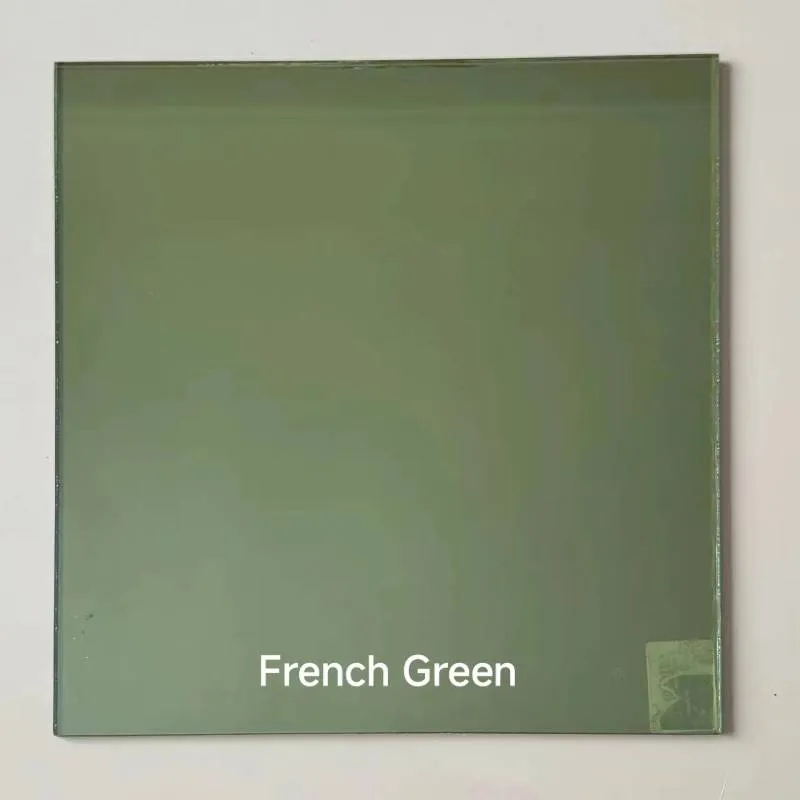

In modern architecture and interior design, the marriage of beauty and function is essential. One material that exemplifies this fusion is reflective glass. Renowned for its aesthetic appeal and energy-saving capabilities, reflective glass is an ideal choice for both commercial and residential applications. Whether used in towering office facades or cozy bedroom windows, this versatile product delivers more than just style—it provides performance and privacy.

When choosing reflective glass, it’s important to understand that not all reflective glass is the same. There are various types of reflective glass designed for different needs. The most common are pyrolytic reflective glass and magnetron sputtered reflective glass. Pyrolytic glass has a hard coating applied during the float process, making it durable and weather-resistant—perfect for exterior applications. Magnetron sputtered glass, on the other hand, has a soft coating, allowing for more customization in color and reflectivity.
Among all varieties, reflective green glass is especially popular in architectural settings. This distinctive shade not only enhances building exteriors but also reduces glare and heat absorption. The color of the glass plays a key role in thermal efficiency, with reflective green glass often chosen for its eco-friendly performance and eye-catching aesthetic.
The choice among the types of reflective glass depends on where and how it’s being used. From high-rise buildings needing maximum solar control to interior partitions that require subtle reflectivity, there's a version of reflective glass to suit every specification.
For bathrooms and bedrooms—areas where privacy is a top concern—the debate often arises: reflective glass or frosted glass? Both offer privacy, but in different ways.
Reflective glass provides one-way visibility during the day. It reflects external light, preventing outsiders from peering in while allowing interior views to remain clear. This makes it perfect for street-facing bedroom windows or bathrooms that receive ample daylight. Frosted glass, while great for complete privacy, can obstruct natural light and limit outward visibility altogether.
Moreover, reflective glass offers thermal and acoustic insulation, enhancing comfort in sleeping and bathing areas. Unlike frosted glass, it helps reduce heat gain in summer and heat loss in winter, making it a smart choice for energy-conscious homeowners. If you want privacy without sacrificing light or style, reflective glass outperforms frosted alternatives.
The precision involved in making reflective glass is a key part of its performance. High-quality float glass is treated with a metal oxide coating using one of two main methods: pyrolytic or magnetron sputtering. These coatings are what give reflective glass its mirror-like appearance and its signature performance features.
In the pyrolytic process, a thin layer of metal oxide—typically titanium or silver—is applied to the hot glass during production. This bonds the coating to the surface, creating a highly durable finish. In the magnetron sputtering method, layers are deposited in a vacuum chamber, allowing for multiple coatings and enhanced customization. This method is particularly effective for making reflective green glass and other colored variants.
The result is a product with superior solar control, UV protection, and aesthetic flexibility. Because of the technical complexity, the reflective glass price varies depending on factors like coating type, thickness, and color. However, for most buyers, the added value in terms of energy savings and visual impact far outweighs the initial cost.
The environmental benefits of reflective glass cannot be overstated. Its ability to control heat gain and loss makes it one of the most sustainable materials in building design. By reflecting a large portion of solar radiation, reflective glass helps maintain indoor temperature balance, reducing the need for artificial cooling or heating.
Buildings that use reflective glass report significantly lower energy consumption throughout the year. In hot climates, it reduces air-conditioning load, while in colder environments, it helps retain indoor heat. This dual performance improves HVAC efficiency and contributes to green building certifications like LEED.
Moreover, the solar reflectance of reflective green glass has been shown to reduce the urban heat island effect. That means cooler cities, lower electricity bills, and a reduced carbon footprint. When you consider the long-term operational savings, the reflective glass price becomes a wise investment rather than a premium expense.
The most popular types of reflective glass include pyrolytic glass with hard coatings and magnetron sputtered glass with soft coatings. Each offers different benefits in terms of durability, solar control, and color flexibility.
Absolutely. reflective green glass is not only beautiful but also functional. Its calming hue adds elegance to interiors while reducing glare and improving energy efficiency.
While the reflective glass price is typically higher than standard float glass, its performance benefits—especially in energy savings and privacy—justify the cost over time.
Yes, reflective glass can offer daytime privacy while allowing more natural light compared to frosted glass. It is especially effective in bathrooms with high daylight exposure.
Reflective glass significantly reduces heating and cooling demands, lowers electricity bills, and contributes to sustainable building practices. It’s a preferred choice for architects focused on environmental responsibility.